Picture a garden full of tiny blue blossoms whispering, "Remember me." These are forget-me-nots, scientifically called Myosotis. Their simple beauty and touching name have won hearts worldwide.
Forget-me-nots are part of the Myosotis genus, which has about 50 species. They're known for small, five-petaled flowers that often bloom in blue shades. Some varieties show off pink, white, or yellow colors.
These charming plants grow in gardens, meadows, and appear in literature. They bring a touch of romance to any setting. Forget-me-nots leave a lasting impression despite their small size.
Origins and Mythology of the Forget-Me-Not Flower
Forget-me-nots, or Myosotis, have a rich history in legend and lore. These tiny blue blossoms have captivated hearts for centuries. Their popularity comes from romantic tales and symbolic meanings.
Medieval Tales and European Folklore
In medieval Europe, forget-me-nots symbolized undying love. A famous tale tells of a knight picking flowers for his lady. He fell into a river and tossed the flowers to his beloved.
As he was swept away, he cried "Forget me not!" This story made the flower a romantic icon.
Ancient Greek and Roman Connections
Greeks linked Myosotis with memory. They thought wearing forget-me-not wreaths kept lovers from forgetting each other. Romans used these flowers in love potions to spark romance.
Religious Symbolism Through History
In Christian tradition, forget-me-nots represent God's enduring love. Some believe these flowers grew where tears fell in Eden. The blue petals were thought to be the Virgin Mary's eyes.
This led to their use in religious art. These associations made forget-me-nots beloved garden flowers. They became powerful symbols of remembrance and loyalty.
Myosotis Species and Varieties
The Myosotis genus includes many forget-me-not species, each with its own charm. These delicate flowers thrive in various habitats. Let's explore some popular varieties that gardeners love worldwide.
Alpine Forget-Me-Not
Alpine forget-me-nots are hardy mountain dwellers. Their bright blue blooms stand out against rocky terrain. These compact plants form tight cushions, perfect for rock gardens.
Woodland Forget-Me-Not
Woodland forget-me-nots bring color to forest floors. They spread easily, creating blue carpets in spring. Gardeners prize this variety for thriving in partial shade.
It's great for naturalizing under trees or in woodland gardens.
Water Forget-Me-Not
Water forget-me-nots flourish near streams and ponds. Their stems can float, allowing growth in shallow water. This variety adds blue to water gardens and attracts pollinators.
Early Forget-Me-Not
Early forget-me-nots bloom in late winter or early spring. They're among the first flowers to appear, bringing hope of warmer days. This smaller variety makes up for size with early color.
Forget-me-not species offer unique beauty to gardens. These versatile plants adapt to many settings, from alpine heights to water's edge. Their charming blooms ensure they're never forgotten in the flower world.
Growing and Caring for Forget-Me-Nots in Your Garden
Forget-me-nots, or Myosotis, are charming flowers that brighten any garden. They thrive in moist, well-drained soil and prefer partial shade to full sun. Plant them about 6 inches apart for proper growth.
Keep the soil consistently moist, especially during dry spells. Add mulch to retain moisture and suppress weeds. Fertilize sparingly to avoid excessive foliage growth.
Propagate Myosotis through seeds or division. Sow seeds in spring or fall, or start indoors before the last frost. Divide established plants in early spring by separating clumps.
Common challenges in growing forget-me-nots include:
- Powdery mildew: Improve air circulation and avoid overhead watering
- Leaf spot: Remove affected leaves and avoid wetting foliage
- Overwatering: Ensure proper drainage to prevent root rot
With proper care, forget-me-nots produce beautiful blue, pink, or white flowers. These low-maintenance plants are perfect for borders, rock gardens, or shady ground cover.
Seasonal Care and Maintenance Tips
Forget-me-nots need specific care throughout the year. Each variety requires attention as seasons change. Let's explore how to nurture these delicate blooms year-round.
Spring Planting Guidelines
Plant forget-me-nots in early spring when soil warms. Choose a spot with partial shade and well-draining soil. Space plants 6 inches apart and water thoroughly after planting.
Summer Blooming Care
Keep soil moist but not waterlogged during hot months. Mulch around plants to retain moisture and cool roots. Deadhead spent blooms to encourage continued flowering.
Marsh scorpion grass may need extra watering in dry spells.
Fall Preparation Methods
Collect seeds from faded flowers for next year's planting. Divide overcrowded clumps to promote healthy growth. Cut back foliage of non-evergreen varieties.
Add compost to soil to nourish plants for winter.
Winter Protection Strategies
Protect evergreen forget-me-not with a layer of mulch around the base. In harsh climates, cover plants with burlap or straw. Remove protection on mild days to prevent moisture buildup.
Check regularly for frost damage and prune affected areas.
- Monitor soil moisture in winter
- Protect from harsh winds
- Clear snow gently from plants
Follow these tips to help your forget-me-nots thrive niedziela handlowa kiedy. They'll bring joy to your garden with their charming blue blooms.
Common Uses in Gardens and Landscapes
True forget-me-nots, or scorpion grass, are versatile flowers that enhance various garden designs. These charming blooms offer many landscaping possibilities. They can create soft borders or adorn rock gardens.
Border and Edging Applications
Forget-me-nots shine as border plants, forming a blue carpet along pathways or garden edges. Their low growth defines spaces without overshadowing other plants. Pair them with taller perennials or shrubs for a layered look.
Rock Garden Integration
In rock gardens, forget-me-nots add delicate color among stones and gravel. They thrive in well-drained soil, making them perfect for these settings. Plant them in clusters between rocks for a natural, cascading effect.
Container Growing Techniques
Scorpion grass adapts well to container growing, ideal for patios, balconies, or small spaces. Use a pot with good drainage and a mix of potting soil and compost. Water often to keep the soil moist but not waterlogged.
For a stunning display, mix forget-me-nots with spring bulbs in larger containers. This blend creates a striking contrast of colors and textures. It will brighten any outdoor area.
Natural Habitats and Distribution
Forget-me-nots, or Myosotis, flourish in various settings worldwide rooomly.pl. These charming flowers adorn alpine meadows, woodland floors, and wetlands. They adapt to diverse landscapes, from rocky mountain slopes to gentle stream banks.
Myosotis species span multiple continents. In North America, they grow from Alaska to California. European varieties thrive in the UK and Scandinavia's cool, moist climates. Asian species paint meadows blue from the Himalayas to Japan.
Climate change threatens forget-me-not habitats. Rising temperatures and changing rainfall disrupt their growth cycles. Conservation efforts aim to protect rare Myosotis species and their ecosystems.
Forget-me-nots showcase nature's resilience and beauty. These tiny flowers persist in various settings, from alpine peaks to lowland bogs. Their widespread presence highlights nature's remarkable adaptability across diverse environments.
 Burnova Plus Gel Aloe and Plankton 25g
2 × 3.72 $
Burnova Plus Gel Aloe and Plankton 25g
2 × 3.72 $  Aloe Vera Gel Burnova Plus snow Algae 25g
2 × 3.72 $
Aloe Vera Gel Burnova Plus snow Algae 25g
2 × 3.72 $  Benda Anthelmintic Suspension (30 ml)
1 × 2.66 $
Benda Anthelmintic Suspension (30 ml)
1 × 2.66 $ 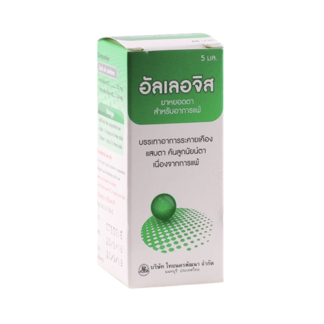 Drops for eye fatigue Allergis 5 ml
6 × 2.79 $
Drops for eye fatigue Allergis 5 ml
6 × 2.79 $ 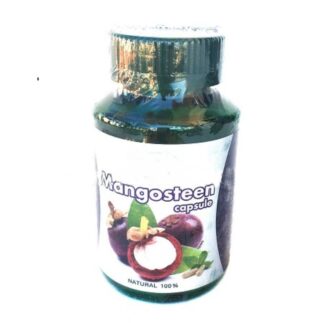 Mangosteen Capsule 100% natural 30 capsules
1 × 6.51 $
Mangosteen Capsule 100% natural 30 capsules
1 × 6.51 $  Compound Kamincur Capsule Thanyaporn Brand
1 × 5.12 $
Compound Kamincur Capsule Thanyaporn Brand
1 × 5.12 $  Wang prom yellow balm (50 gr)
10 × 3.07 $
Wang prom yellow balm (50 gr)
10 × 3.07 $ 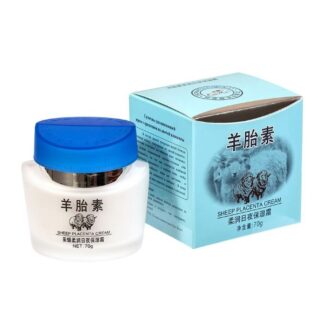 Sheep Placenta Cream
1 × 6.82 $
Sheep Placenta Cream
1 × 6.82 $  Nida Trinolone Oral Paste for treatment of stomatitis
8 × 2.56 $
Nida Trinolone Oral Paste for treatment of stomatitis
8 × 2.56 $  Drinking marine collagen for beauty and health Donutt
1 × 15.89 $
Drinking marine collagen for beauty and health Donutt
1 × 15.89 $ 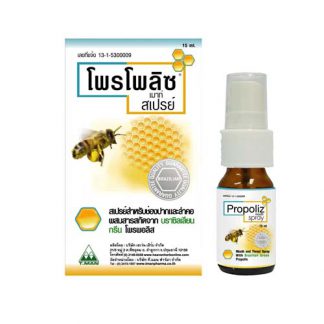 Propoliz mouth spray
1 × 6.14 $
Propoliz mouth spray
1 × 6.14 $  Hamar longan Foot Pain cream
1 × 6.31 $
Hamar longan Foot Pain cream
1 × 6.31 $  Genive Thai baldness tonic
1 × 3.75 $
Genive Thai baldness tonic
1 × 3.75 $ 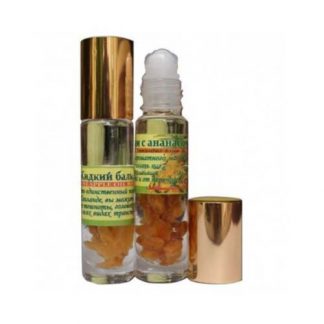 Pineapple oil Balm
1 × 1.19 $
Pineapple oil Balm
1 × 1.19 $  Wang Prom DARK BLUE BALM (50 gr)
1 × 3.03 $
Wang Prom DARK BLUE BALM (50 gr)
1 × 3.03 $ 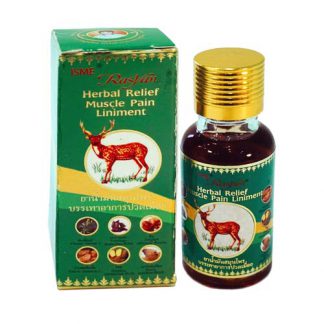 Herbal Relief Pain Oil RASYAN (20 ml or 50 ml) - 20 ml
1 × 3.72 $
Herbal Relief Pain Oil RASYAN (20 ml or 50 ml) - 20 ml
1 × 3.72 $  Thai green balm Wang Prom - 50g
1 × 3.75 $
Thai green balm Wang Prom - 50g
1 × 3.75 $  Holika Aloe 99% Universal Gel
1 × 3.31 $
Holika Aloe 99% Universal Gel
1 × 3.31 $  Genive Hair Loss Serum
1 × 6.82 $
Genive Hair Loss Serum
1 × 6.82 $  Centella cream for scars, stretch marks and wound healing
2 × 1.53 $
Centella cream for scars, stretch marks and wound healing
2 × 1.53 $  Aloe vera 99% Magic Lip
1 × 1.33 $
Aloe vera 99% Magic Lip
1 × 1.33 $  Cod liver oil capsules (60 capsules)
1 × 5.18 $
Cod liver oil capsules (60 capsules)
1 × 5.18 $ 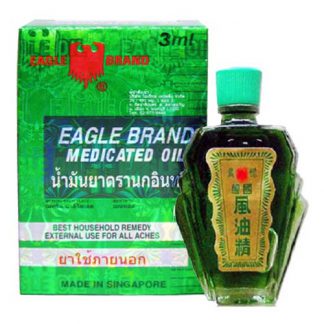 Healing oil with chlorophyll
1 × 3.51 $
Healing oil with chlorophyll
1 × 3.51 $ 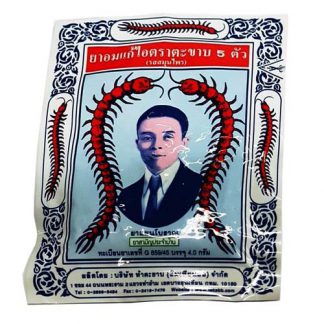 Tablets - cough drops and for fresh breath
2 × 0.83 $
Tablets - cough drops and for fresh breath
2 × 0.83 $ 
 Burnova Plus Gel Aloe and Plankton 25g
Burnova Plus Gel Aloe and Plankton 25g  Aloe Vera Gel Burnova Plus snow Algae 25g
Aloe Vera Gel Burnova Plus snow Algae 25g  Benda Anthelmintic Suspension (30 ml)
Benda Anthelmintic Suspension (30 ml)  Drops for eye fatigue Allergis 5 ml
Drops for eye fatigue Allergis 5 ml  Mangosteen Capsule 100% natural 30 capsules
Mangosteen Capsule 100% natural 30 capsules  Compound Kamincur Capsule Thanyaporn Brand
Compound Kamincur Capsule Thanyaporn Brand  Wang prom yellow balm (50 gr)
Wang prom yellow balm (50 gr)  Sheep Placenta Cream
Sheep Placenta Cream  Nida Trinolone Oral Paste for treatment of stomatitis
Nida Trinolone Oral Paste for treatment of stomatitis  Drinking marine collagen for beauty and health Donutt
Drinking marine collagen for beauty and health Donutt  Propoliz mouth spray
Propoliz mouth spray  Hamar longan Foot Pain cream
Hamar longan Foot Pain cream  Genive Thai baldness tonic
Genive Thai baldness tonic  Pineapple oil Balm
Pineapple oil Balm  Wang Prom DARK BLUE BALM (50 gr)
Wang Prom DARK BLUE BALM (50 gr)  Herbal Relief Pain Oil RASYAN (20 ml or 50 ml) - 20 ml
Herbal Relief Pain Oil RASYAN (20 ml or 50 ml) - 20 ml  Thai green balm Wang Prom - 50g
Thai green balm Wang Prom - 50g  Holika Aloe 99% Universal Gel
Holika Aloe 99% Universal Gel  Genive Hair Loss Serum
Genive Hair Loss Serum  Centella cream for scars, stretch marks and wound healing
Centella cream for scars, stretch marks and wound healing  Aloe vera 99% Magic Lip
Aloe vera 99% Magic Lip  Cod liver oil capsules (60 capsules)
Cod liver oil capsules (60 capsules)  Healing oil with chlorophyll
Healing oil with chlorophyll  Tablets - cough drops and for fresh breath
Tablets - cough drops and for fresh breath